 W
WAl Bithnah is a village in Fujairah, United Arab Emirates (UAE), long occupying a strategic location in the Wadi Ham, which is the only natural link to the interior of the UAE and the Persian Gulf from the East Coast city, and Emirate of Fujairah.
 W
WAl Thuqeibah is an Iron Age archaeological site located near the town of Al Madam in Sharjah, United Arab Emirates (UAE). The site was originally excavated by teams from the Autonomous University of Madrid in the mid-1990s. Thuqeibah has been dated from the Iron Age II and III periods. A settlement consisting of a number of houses and a well, it has been associated with a nearby Iron Age falaj system, thought to date from the Iron Age II era.
 W
WThe territory currently known as the United Arab Emirates was formerly populated by inhabitants of a number of coastal and inland settlements, with human remains pointing to a pattern of transmigration and settlement as far back as 125,000 years. Prehistoric settlement in the UAE took place in the Neolithic, with a number of distinctive eras of ancient settlement including the Stone Age Arabian Bifacial and Ubaid cultures from 5000 to 3100 BCE; the Hafit period with its distinctive beehive shaped tombs and Jemdet Nasr pottery, from 3200 to 2600 BCE; the Umm Al-Nar period from 2600 to 2000 BCE; the Wadi Suq Culture from 2000–1300 BCE and the three Iron Ages of the UAE.
 W
WBidaa Bint Saud is an archaeological site in Al-Ain Region, Abu Dhabi, United Arab Emirates, notable for its Hafit Period tombs, Iron Age irrigation systems and rare remains of an Iron Age building thought to have been a distribution centre for water from two falajes. It is a listed UN World Heritage site. Finds from the site are displayed at Al Ain National Museum.
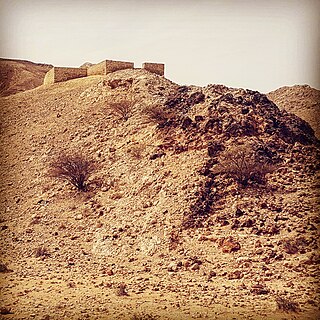 W
WJebel Buhais or Jebel Al-Buhais is a geological feature, an extensive rocky outcrop, as well as an archaeological site located near Madam in the central region of the Emirate of Sharjah, the UAE, about 48 kilometres southeast of the city of Sharjah. The area contains an extensive necropolis, consisting of burial sites spanning the Stone, Bronze, Iron and Hellenistic ages of human settlement in the UAE. Burials at Jebel Buhais date back to the 5th Millennium BCE. The site is located to the side of a limestone outcrop rising to some 340 metres above sea level and which runs almost contiguously from the town of Madam north to the town of Mleiha, itself an important archaeological site.
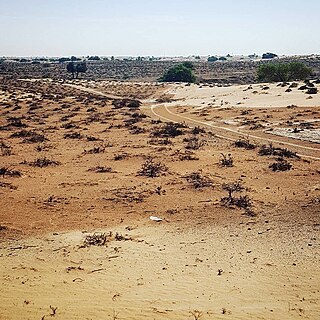 W
WEd-Dur or Ed-Dour is an Ancient Near Eastern City located in Umm Al Quwain, in the United Arab Emirates (UAE). One of the largest archaeological sites in the emirates, comprising an area of some 5 km2 (1.9 sq mi), the coastal settlement overlooks Al-Beidha Lake. One of the most important archaeological finds in the UAE, It has been dubbed 'one of the most significant lost cities of Arabia'.
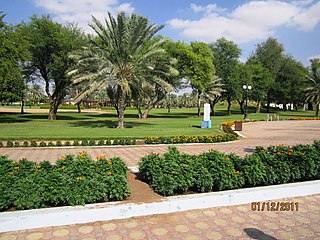 W
WHili Archaeological Park is the location of a Bronze Age site in Al Ain, Emirate of Abu Dhabi, the United Arab Emirates.
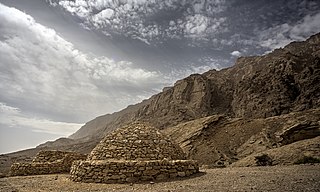 W
WJabal Hafeet is a mountain in the region of Tawam, on the border of the United Arab Emirates and Oman, which may be considered an outlier of Al Hajar Mountains in Eastern Arabia. Due to its proximity to the main Hajar range, the mountain may be considered as being part of the Hajar range, sensu lato. To the north is the UAE city of Al Ain, in the Eastern Region of the Emirate of Abu Dhabi, and the adjacent Omani town of Al-Buraimi.
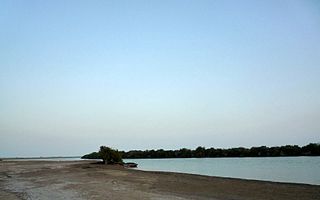 W
WKalba is a city in the Emirate of Sharjah in the United Arab Emirates (UAE). It is an exclave of Sharjah lying on the Gulf of Oman coast north of Oman. Khor Kalba, an important nature reserve and mangrove swamp, is located south of the town by the Omani border.
 W
WMasafi is a village located on the edge of the Hajar Mountains in the United Arab Emirates. It sits at the inland entrance of the Wadi Ham, which runs down to Fujairah City. The border between the emirates of Fujairah and Ras Al Khaimah runs through the town, which houses a barracks used by the United Arab Emirates Armed Forces.
 W
WMeliha Archaeological Centre is a visitor centre and exhibition based around the history and archaeology of the areas surrounding the village of Mleiha in Sharjah, the United Arab Emirates. Built around a preserved Umm Al Nar era tomb, the centre details the excavations and discoveries made over the past 40 years at Mleiha and surrounding areas, particularly the important Faya North East find, which provides evidence that 'anatomically modern humans' were in the Mleiha area between 130,000 and 120,000 years ago. These finds point to the spread of humanity from Africa across the Red Sea to the Persian Gulf region, and onward to populate the world through Iran, India, Europe and Asia.
 W
WQattara Oasis is an area of irrigated date farm in Al Ain, United Arab Emirates featuring a distinctive falaj irrigation system as well as a late Bronze Age archaeological site dated to 1800–1500 BCE. The oasis has been extensively surveyed by students from Al Ain University since 2015, and is home to 19 buildings of varying antiquity, of which nine are mosques. Among these are thought to be some of the oldest buildings still standing in Al Ain.
 W
WRumailah is an archaeological site in Al Ain, UAE, as well as the site of a thick-walled coral and adobe fort, thought to date to the early 20th century.
 W
WSaruq Al Hadid is an archaeological site in Dubai, United Arab Emirates (UAE), and stands as one of the most important and enigmatic historical sites in the country. Findings from the site are displayed in a museum with the same name in the city of Dubai. The site was originally discovered by the ruler of Dubai, Sheikh Mohammed bin Rashid Al Maktoum, while flying his helicopter across the desert.
 W
WShimal is the name of a settlement in Ras Al Khaimah associated with the Shihuh tribe of the Northern UAE and Oman. It is also the location of an important archaeological site dating back to the Umm Al Nar culture. Tombs excavated and surveyed at Shimal include both the round Umm Al Nar type and the barrow tombs typical of the 'Wadi Suq' era. Grave goods found at Shimal have included large finds of pottery as well as beads and objects providing a link to the Harappan Indus Valley Civilisation.
 W
WTell Abraq was an ancient Near Eastern city. Located on the border between Sharjah and Umm al-Qawain in the United Arab Emirates, the city was originally on the coastline of the Persian Gulf but changing sea levels have placed the remains of the city inland. It is located on the main road from Umm Al Qawain to Falaj Al Moalla.
 W
WUmm Al Nar is a Bronze Age culture that existed around 2600-2000 BCE in the area of modern-day United Arab Emirates and Northern Oman. The Arabic name has in the past frequently been transliterated as Umm an-Nar and also Umm al-Nar. The etymology derives from the island of the same name which lies adjacent to Abu Dhabi city and which provided early evidence and finds attributed to the period.